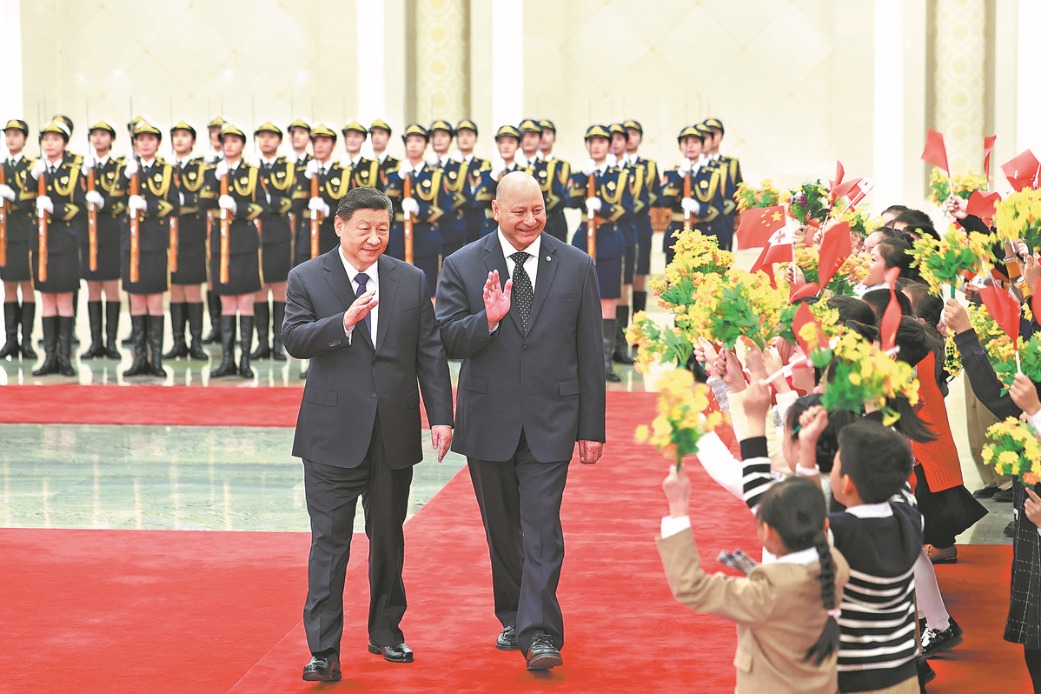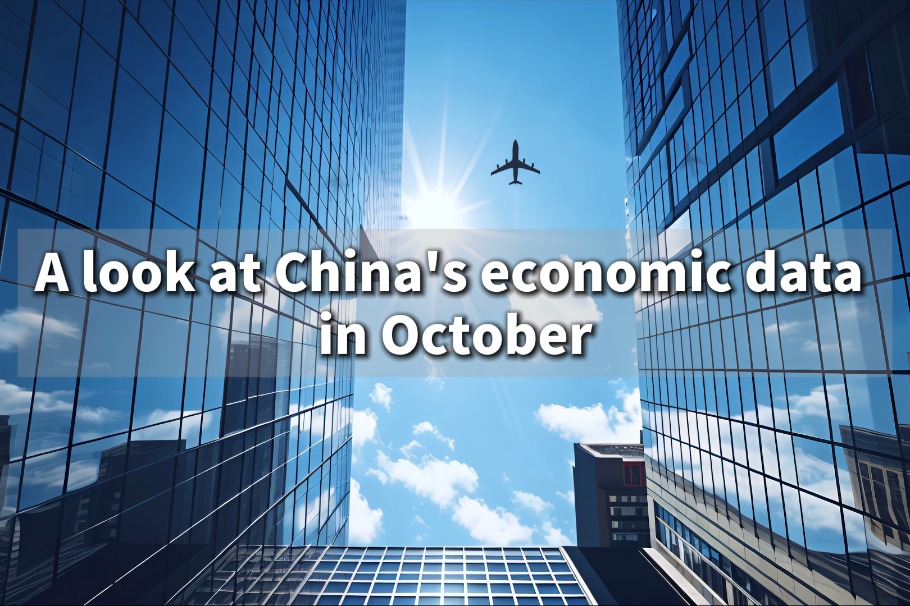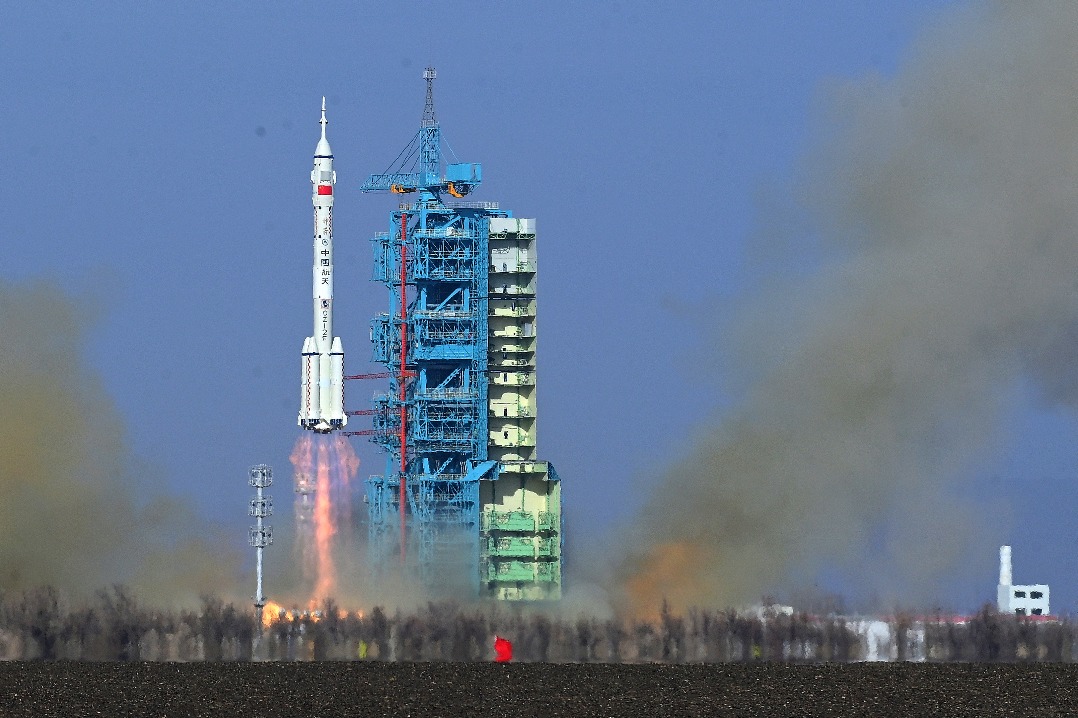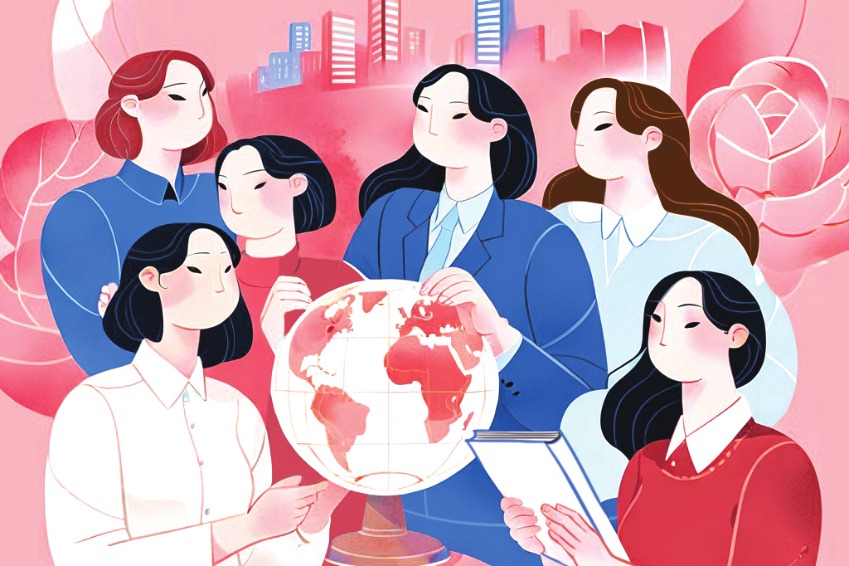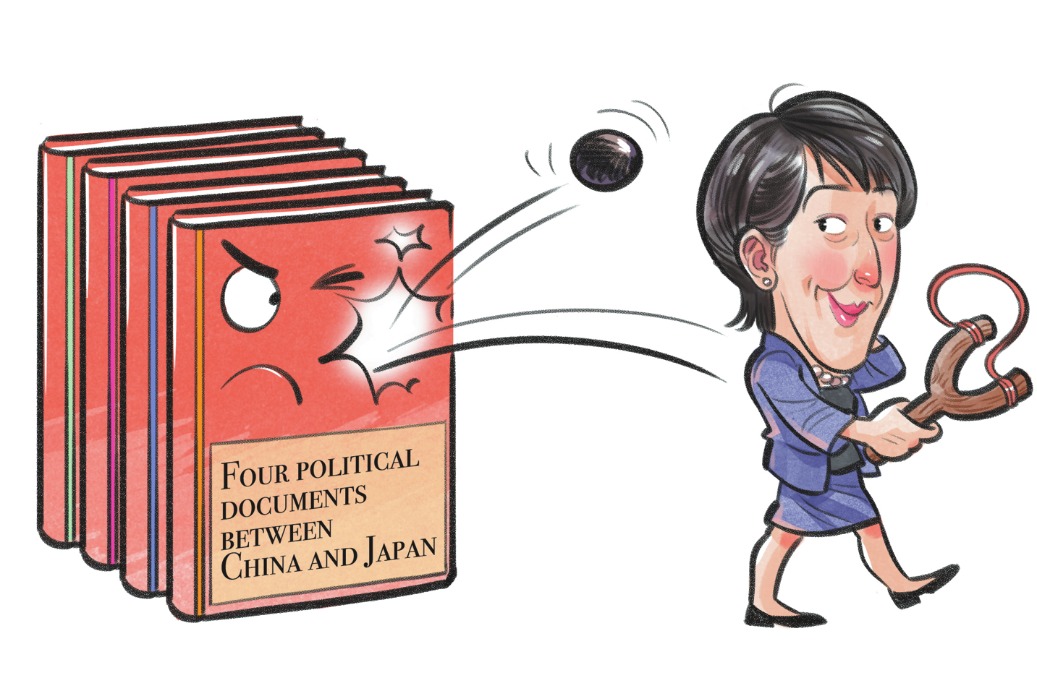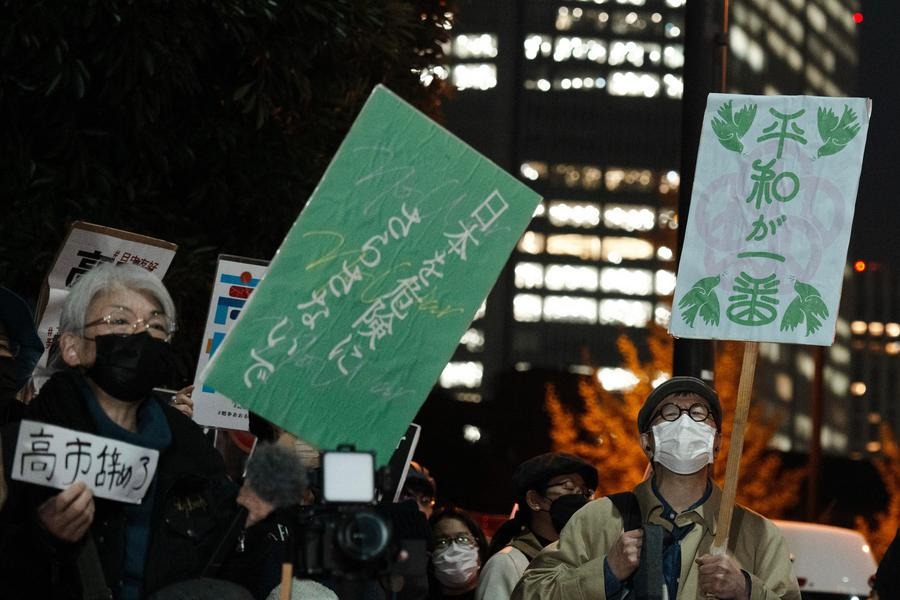Healthy arteries


China's overseas footprint can enable a parallel clean-tech supply chain
China has become an essential force in global climate governance and the backbone of the world's clean-energy transition. Over the past decade, China's scale, innovation and manufacturing excellence have driven down the costs of solar energy, batteries, electric vehicles and other low-carbon technologies at an unprecedented pace. By 2023, China had established a dominant position in several key clean-technology manufacturing segments — producing over 80 percent of global solar photovoltaic modules, about 95 percent of wafers, and the vast majority of battery anode and cathode materials. These advances have driven record levels of global clean-energy deployment and accelerated the global energy transition.
This concentration is the outcome of clustered clean-tech innovation and manufacturing and a profound shift in the global energy system, rather than the result of "unfair trade practices".
Two dynamics explain much of today's industrial concentration. First, clean-tech industries develop under conditions that are very different from traditional manufacturing. They combine steep learning curves, large fixed investments, dense supplier networks and continuous process improvements. As technologies such as solar PV, batteries and EVs have matured at extraordinary speed, production naturally clustered where innovation capacity, cost advantages and quality control were strongest. Therefore, many economies have struggled to enter segments of the supply chains.
Second, the nature of energy security has fundamentally changed. Unlike the fossil-fuel era — when power depended on access to fossil-fuel resources — the low-carbon era depends on access to manufactured technologies.
China's scale and learning-by-doing have created a global public good: affordable, reliable and high-quality clean technologies that have enabled the world to accelerate its clean-energy transition. Research shows that without China's scale and globalized supply chains, solar module prices in 2030 would be 20 to 30 percent higher. Between 2008 and 2020 alone, this globalized market structure saved PV installers $24 billion in the United States, $7 billion in Germany and $36 billion in China.
Despite the global benefits, clean-tech growth is reshaping global economic balances and has prompted trade defenses, tariffs and anti-dumping measures from the US, the European Union, India and others. China's expanding role intensifies competition with traditional leaders in sectors such as EVs, raising pressure on their governments to respond. High concentration also raises resilience and equity concerns, as many countries fear dependence on imported clean-tech products amid surging demand.
Mounting supply-chain security concerns, amplified by geopolitical and geoeconomic pressures, are steering diversification efforts that exclude China and split supply chains into rival blocs and provoke reciprocal measures. These bifurcation strategies raise unit costs, slow learning-by-doing and lengthen lead times, re-routing production to less efficient nodes, increasing life-cycle emissions and environmental footprints, and ultimately undermining global energy transition and climate ambition.
From China's perspective, this high degree of concentration carries diplomatic costs by heightening external anxieties that place China at the center of geopolitical debates it did not seek to shape, triggering defensive industrial policies.
As the clean-tech transition accelerates, it is essential to balance the efficiency generated by industrial clusters with the resilience that comes from broader geographic diversification. A supply-chain system that is resilient, efficient, equitable and sustainable (REES) is therefore required. Resilience should guide diversification strategies, while broader geographic distribution can enhance both resilience and equity. Yet efficiency must remain the foundation, as rapid cost reductions are indispensable for accelerating global energy transitions.
The open-league model offers a cooperative alternative to zero-sum industrial competition. Similar to the English Premier League, in such a system, multiple regional hubs — across Asia, Europe, the Americas and emerging economies — operate under common rules, transparent traceability and reciprocal market access. These hubs compete in innovation and cost reduction while remaining connected through aligned standards, shared supplies and interoperable markets. Unlike the Premier League, the number of hubs is not fixed and thus it is regarded as "open". China would remain a leading "team" in this league, not by dominating all segments, but by contributing rule setting, technology, investment, components and stewardship within a shared rulebook. This model preserves global efficiency while enhancing resilience and ensuring that opportunities and benefits are more widely shared.
China has already begun a strategic shift to enable other countries to build their own clean-tech capabilities, thereby reducing global inequality. Earlier policy guidance encourages Chinese enterprises to invest abroad, deepen R&D partnerships, expand standard-setting collaboration and participate more actively in global clean-tech governance.
Recently, the Recommendations of the 20th Communist Party of China Central Committee for Formulating the 15th Five-Year Plan (2026-30) for National Economic and Social Development explicitly called for the "rational and orderly overseas layout of industrial and supply chains" to enhance resilience and strengthen China's global economic coordination. This signals China's transition from an efficiency-driven model toward one that values resilience, equity and shared development.
Looking ahead, China can offer leadership in shaping the global clean-tech landscape. Strengthening legitimacy through clearer communication on China's role, joint rule-setting and proactive international coordination should be the central priorities. China can deepen co-investment and co-production with partners — including advanced economies such as Australia and emerging markets — expand licensing and modular technology transfer, and support skills training and capacity building so that more regions can enter midstream and high-value segments and even become manufacturing hubs. China should also participate in coordinated global layout planning to advance REES-aligned supply chains, while leading on circular-economy standards, low-carbon manufacturing and transparent traceability.
Cooperation with China is indispensable for an affordable, rapid and inclusive global energy transition. The international community, including strategic competitors, needs to engage China while addressing legitimate concerns about resilience and equity. No other country can match China's manufacturing scale, cost-reduction capacity and technological maturity in clean technologies, which means that supply chains built without China would raise costs, slow innovation and weaken global climate ambition. In this context, cooperation with China is not merely desirable — it is indispensable for an affordable, rapid and inclusive global energy transition.
Ultimately, the success of the global clean-energy transition depends on cooperation, not division. Clean-tech supply chains have become the arteries of the modern economy, and only a connected, mutually beneficial system can deliver the rapid scale-up required to meet global climate goals. A more open, resilient and equitable supply-chain architecture will preserve efficiency gains while spreading opportunities more widely across regions. By championing such a vision — combining efficiency, fairness and resilience — China can help steer the world toward a faster, fairer and more secure global energy transition.
The author is a professor of energy economics and sustainability at the University of Technology Sydney, the research principal at the Australia-China Relations Institute at the University of Technology Sydney, and the president of the International Society for Energy Transition Studies. The author contributed this article to China Watch, a think tank powered by China Daily.
The views do not necessarily reflect those of China Daily.
Contact the editor at editor@chinawatch.cn.


















